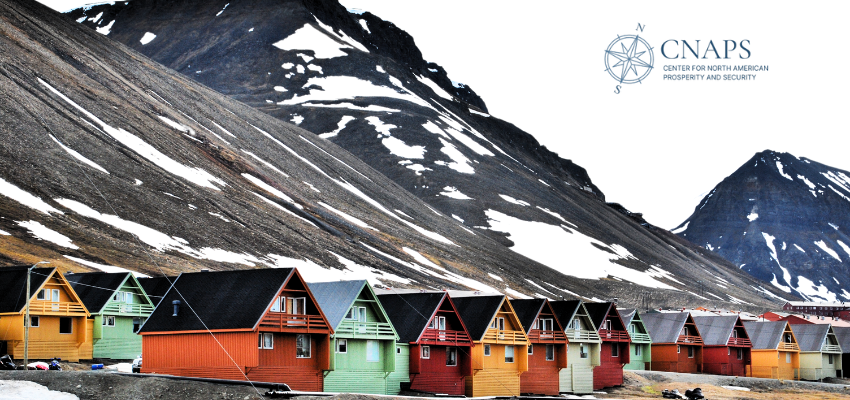This article was published in International Policy Digest.
By Patrick Duxbury and Lee Carson, November 4, 2024
Amid mounting global tensions, Canada and its NATO allies have each pledged to strengthen their domestic defense industries. For Canada, this commitment also means bolstering its defense spending to meet the 2% GDP target and addressing its NORAD modernization promises. Yet, according to recent reports, the Canadian government is struggling to manage the burden these ambitious goals place on the country’s defense infrastructure.
Defense is changing rapidly, driven by technological advances and their swift adoption in conflicts like the war in Ukraine. Although the Canadian Armed Forces (CAF) have made strides, such as launching a new cyber command, the broader vision of a multipurpose, combat-ready force that can navigate “a full spectrum of conflict” remains elusive. Senior Fellow Richard Shimooka of the Macdonald-Laurier Institute notes the growing strain on resources: “There are simply too few dollars chasing too many priorities.”
Canada must prioritize its efforts in this complex landscape, and experts like International Relations professor Andrew Latham argue that the Arctic should be its focus. Canada’s NORAD obligations—a treaty with the United States—commit both countries to North American defense, particularly against threats from Russia and, increasingly, China, which often traverse the Arctic.
In response to these pressures, the Canadian government pledged in July 2022 to a significant investment in NORAD modernization. However, Ottawa’s progress has been slow, especially as the United States, acutely aware of rising Arctic tensions, recently issued a new National Strategy for the Arctic Region. This strategy highlights the need for U.S. Arctic capabilities while urging reliance on allied support to ease the strain on its stretched military.
Canada’s commitment to Arctic defense is now more critical than ever. NATO’s expansion to include Sweden and Finland underscores a newfound focus on the Arctic. As NATO’s northwestern defense anchor, Canada is uniquely positioned to protect this vast territory. This responsibility secures North American interests and shores up NATO’s Arctic flank, which Canada has an intrinsic duty to defend. Canada must protect its Arctic Archipelago, which includes waters Canada asserts as internal but the U.S. views as international straits—a position Canada has long defended with little U.S. support.
Canada’s recent defense policy update, “Our North Strong and Free,” hints at this Arctic shift, encouraging CAF Arctic specialization, even if the transition remains gradual. Yet, a concentrated Arctic focus would help Canada meet its most critical defense needs, with other international deployments taking secondary priority.
Canada’s defense industry has tried to shape a more robust domestic capability for years. However, initiatives like the 2018 Industrial Technological Benefits (ITB) strategy have yielded only modest results. The ITB sought to channel defense spending toward innovations in “key industrial capabilities” (KICs). Yet, the program often pushed Canadian firms to reinvent existing products rather than fostering a competitive domestic supply chain. Paradoxically, this led to increased reliance on offshore suppliers. Reimagining this strategy with an Arctic specialization would allow Canada to develop precise capabilities to secure its northern regions. Priority areas include Arctic mobility, sensing, communication, and infrastructure, where Canada faces significant deficits.
Former defense minister Anita Anand emphasized these needs when unveiling NORAD modernization plans, citing “next-generation defence technology, infrastructure development, logistics, base operations, and in-service support” as essential components. While certain advanced technologies are broadly applicable, the latter capabilities are Arctic-specific and foundational to a meaningful Arctic defense strategy. But in prioritizing the Arctic, Canada’s defense must also respect and engage the expertise of the region’s residents, particularly the Inuit.
As Canada fortifies its Arctic commitments, its partnership with the Inuit—a relationship founded on modern treaties across Inuit Nunangat (the Inuit Homeland)—becomes even more essential. Inuit Tapiriit Kanatami (ITK), the national organization representing Inuit interests, ensures that Inuit rights, resources, and leadership are integral to any defense initiatives in the North. Additionally, Regional Development Corporations, or “DevCorps,” within Inuit Nunangat play an indispensable role.
Collectively, Inuit DevCorps operates more than 100 businesses, including logistics, construction, and transportation companies, that are crucial to Arctic infrastructure. Companies like Nasittuq Corporation, which manages major Department of National Defence (DND) contracts, and Canadian North, a leading regional airline, bring specialized expertise and resources. Other prominent companies like ATCO Frontec and Davie Shipbuilding are innovating in Arctic mobility, sensing, and communication technology—all vital for Arctic defense.
Global security threats are fast-evolving, and Canada cannot afford to wait. Canada’s incoming Chief of the Defence Staff has issued a stark warning, cautioning that Canada has only five years to prepare for long-range threats through the Arctic. As the United States charges ahead with NORAD modernization, Canada must act now or risk being left behind. Canada has the frameworks it needs, such as the National Shipbuilding Strategy (NSS), which has been instrumental in revitalizing Canadian shipyards, sustaining marine industries, and safeguarding sovereignty.
Replicating the NSS’s public-private partnership model for NORAD modernization is crucial. Defense consultants Grant MacDonald and Dan Doran of KPMG emphasize the need for an integrated program office that unites stakeholders, including government departments, industry players, and Inuit Development Corporations. Involving these corporations in Arctic NORAD projects would be invaluable, as they possess hands-on experience building and maintaining essential infrastructure across the North. If Canada hopes to expedite NORAD modernization, Inuit partnerships will be essential.
Additionally, Canada should leverage the Inuit Crown Partnership Committee (ICPC), an existing framework for collaboration between the federal government and Inuit leaders. Co-chaired by the prime minister and the ITK president, the ICPC promotes shared priorities and prosperity across Inuit Nunangat. This committee could play a transformative role in overseeing Arctic defense projects, ensuring that the federal government’s goals align with Inuit needs. An ICPC-guided approach would allow Canada to protect its Arctic sovereignty and secure the Inuit partnership meaningfully and respectfully.
Canada faces a pivotal moment to reaffirm its commitment to national security and sovereignty through a robust, Arctic-focused defense strategy. Canada can fulfill its NORAD obligations by engaging Inuit partners and leveraging northern expertise, strengthening its global alliances, and honoring its responsibility to the North. With wise policy and strategic Arctic prioritization, Canada has a unique opportunity to embrace its identity as an Arctic nation.
At this moment, Canada must rise to the challenge of securing its northern frontiers with the strength of its people and the foresight of its leaders. This is not merely a defense initiative but a profound opportunity to redefine Canada’s global role, asserting resilience and respect for its own northern communities.
Lee Carson is the president of NORSTRAT Consulting Inc.
Patrick Duxbury is the executive director of the Inuit Development Corporation Association.
Both authors are also contributors to the Macdonald-Laurier Institute, the Center for North American Prosperity and Security’s parent organization in Canada.








